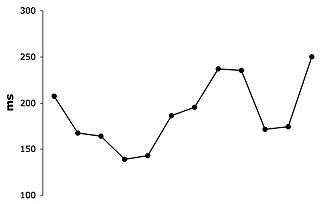Expressive timing
Expressive timing refers to the musical phenomenon whereby a performer introduces subtle temporal nuances to an otherwise metronomic ("perfectly" timed) interpretation. This is also referred to as microtiming or microrhythm. For instance, a pianist might introduce a slight ritardando (not called for explicitly in the musical score) at the end of a phrase to convey a structural event (in this case, a phrase ending). Expressive timing has been shown to operate in different musical styles. In jazz, expressive timing plays an important role in how "swing" eighth-notes are timed.
It has also been shown empirically that simple rhythms are often performed differently from how they are notated. This aspect of rhythm production is at odds with a feature of rhythm perception—namely, that rhythms made up of complex ratios are simplified by listeners to consist of simple ratios. For example, when presented with a sequence of sounds whose interonset intervals (IOIs) are 700 - 300 - 400 milliseconds (ratios of 7:3:4), a listener might code the rhythm according to the simpler ratios 2:1:1. This is known as quantizing.
The following figure graphs timing data for a short phrase performed by John Coltrane ("Like Someone in Love" 2:42-2:45 [1]). The Y-axis plots interonset intervals. Even though the notes are nominally sextuplets, notice how their actual durations fluctuate above and below the sextuplet's metronomic value of 162 ms.[2]

.jpg)
References
- John Coltrane - Like someone in love https://www.youtube.com/watch?v=e5AKTTZT7hg
- F. Benadon - Gridless Beats / Perspectives of New Music 2009 Vol. 47 No. 1 p. 147 http://www.fernandobenadon.com/uploads/1/8/4/2/18429773/gridless_beats.pdf